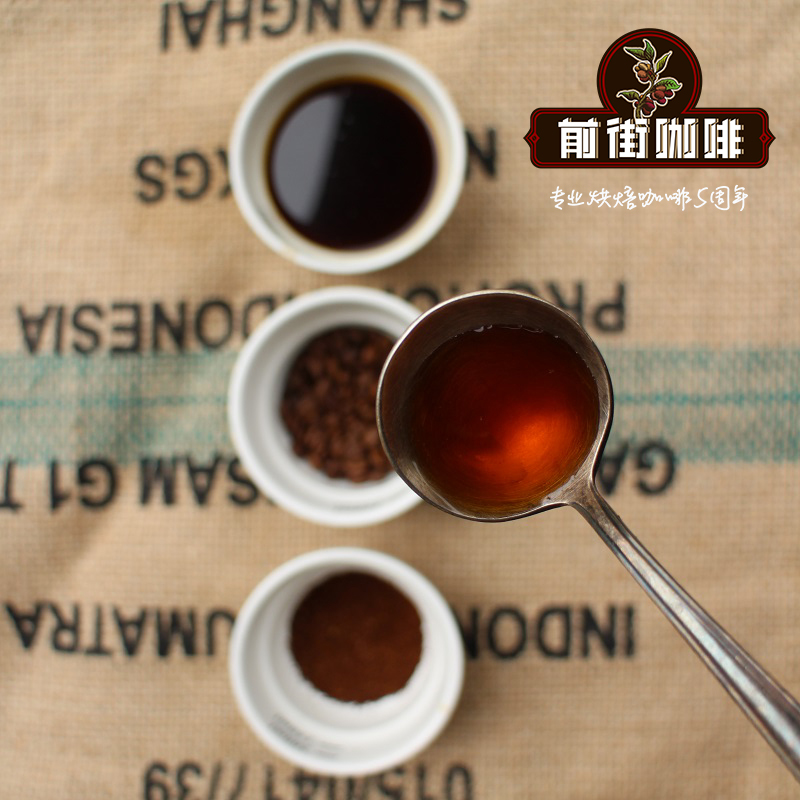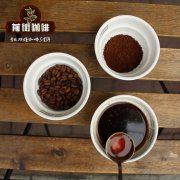Honduras | San Vincent processing Plant in Santa Barbara District, Saakastoumei small Farmer Parainema is rare

Professional coffee knowledge exchange more coffee bean information please follow the coffee workshop (Wechat official account cafe_style)
Honduras | San Vincent processing Plant in Santa Barbara District Sacasto Mei small Farmer Parainema rare variety flavor?
A rare variety of Parainema, a small farmer in Sakastoum, Honduras. There are 280000 hectares of coffee plantations in Honduras, mainly small coffee merchants, most of which are less than 3.5 hectares, which account for 60% of Hongguo's production. In the coffee garden, men and women collect coffee beans by hand, then carefully handle and process them to meet the needs of the market and meet the different tastes of consumers. Honduras collects 3 million bags of coffee every year, providing the world with perfect coffee, unique coffee aroma and multi-quality, making it the second largest coffee exporter in Central America and the tenth largest coffee exporter in the world. Hongguo's coffee industry has a bearing on the livelihood of 100,000 families in Hongguo, creates 1 million jobs and creates a permanent economic foundation for Honduras.
Parainema, a hybrid variety, is resistant to leaf rust and other pests. Parainema was developed in 1981 to experiment against different coffee pests and diseases, also known as Sarchimor TMI 5269. It was first planted in Costa Rica in 2006-2008. As for the introduction to Honduras, it was in 2010, called Parainema. The Parainema coffee tree is a small shrub that can have green, yellow, or a mixture of two colors at the end of its leaves, depending on the pedigree of the tree species it comes from. Can prevent coffee leaves from getting leaf rust and prevent nematode erosion.
Honduran coffee is divided into six major producing areas, spread all over the west and south, namely Santa Barbara (Santa Barbara), Periso (El Paraiso), Copan (Copan), La Paz (La Paz) and Comayagua (Olan Mound), with an average height of more than 1100 meters above sea level. Coffee varieties are 100 per cent Arabica, 69 per cent are HG and 12 per cent are SHG,19% and CS. There are mainly Typica, Bourbon, Caturra, Villa Sarchi and Lempira brands. Hongguo coffee is of first-class quality and its price is the most competitive in Central American countries. Small, round, slightly bluish green coffee, belongs to high acidity, taste full and slightly sweet, suitable for comprehensive coffee, can also be made into single coffee.
Producing area: Santa Barbara District (Santa Barbara)
Producer: St. Vincent treatment Plant (San Vicente)
Variety: Parainema species
Altitude: 1500 to 1900 m
Treatment: washing treatment
Flavor description: tomato, grape, watermelon, lime, delicate acidity and soft finish
Of the 18 provinces in Honduras, 15 are engaged in coffee production. It is no exaggeration to say that coffee is an important cash crop and source of foreign exchange in Honduras. Coffee has created more than 1 million jobs in Honduras and has a bearing on the livelihood of many families. In coffee gardens in Honduras, regardless of men and women, coffee beans are picked by hand and carefully processed and processed according to the needs of the market to meet the different tastes of consumers. Honduras is also one of the important emerging producing areas of high-quality coffee in the world, and the coffee quality is very good. The coffee varieties planted are 100 per cent Arabica, of which 69 per cent are HG, 19 per cent are CS and 12 per cent are SHG; there are a variety of varieties, such as Typica, Bourbon, Caturra, Villa Sarchi and Lempira. Coffee in Honduras mainly comes from six major producing areas, which are located in the west and south, namely, Santa Barbara, El Paraiso, Copan, La Paz, Comayagua and Olancho, with an average altitude of more than 1100 meters above sea level. In addition to producing high-quality coffee, Honduras also actively supports and invests in the export of organic or rainforest alliance coffee beans. Its coffee quality is not only first-class, but its price is also the most competitive among Central American countries.
Qianjie recommended cooking:
Filter cup: Hario V60
Water temperature: 90 degrees
Degree of grinding: small Fuji 3.5
Cooking methods: the ratio of water to powder is 1:15, 15g powder, the first injection of 25g water, 25 s steaming, the second injection to 120g water cut off, waiting for the powder bed water to half and then water injection, slow water injection until 225g water, extraction time about 2:00
Analysis: using three-stage brewing to clarify the flavor of the front, middle and back of the coffee. Because the V60 has many ribs and the drainage speed is fast, it can prolong the extraction time when the water is cut off.
Important Notice :
前街咖啡 FrontStreet Coffee has moved to new addredd:
FrontStreet Coffee Address: 315,Donghua East Road,GuangZhou
Tel:020 38364473
- Prev

Panamanian Kotowa family Rio Cristal Jinghe Manor introduces _ BOP how to drink sun roses in summer?
Professional coffee knowledge exchange more coffee bean information please follow the coffee workshop (Wechat official account cafe_style) 2018 Best Of Panama (best Panama) Rose Summer Group 5th bid batch Panamanian Coffee Catova Crystal River Manor Green Top Rose Summer Sun Panama Kotowa Rio Cristal Green Tip Geisha Natural (Manor Award winning experience
- Next

Introduction to Apollo Coffee Farm in Panama _ description of Apollo Coffee Flavor in Balu volcanic area
Professional coffee knowledge exchange more coffee bean information please follow coffee workshop (Wechat official account cafe_style) Panama Baru volcanic area (Panama Volan Baru Series Apollo) Apollo Coffee Panamanian Coffee Baru volcanic area (Panama Volan Baru Series Apollo) Apollo Coffee was introduced into Panama in 1780
Related
- Detailed explanation of Jadeite planting Land in Panamanian Jadeite Manor introduction to the grading system of Jadeite competitive bidding, Red bid, Green bid and Rose Summer
- Story of Coffee planting in Brenka region of Costa Rica Stonehenge Manor anaerobic heavy honey treatment of flavor mouth
- What's on the barrel of Blue Mountain Coffee beans?
- Can American coffee also pull flowers? How to use hot American style to pull out a good-looking pattern?
- Can you make a cold extract with coffee beans? What is the right proportion for cold-extracted coffee formula?
- Indonesian PWN Gold Mandrine Coffee Origin Features Flavor How to Chong? Mandolin coffee is American.
- A brief introduction to the flavor characteristics of Brazilian yellow bourbon coffee beans
- What is the effect of different water quality on the flavor of cold-extracted coffee? What kind of water is best for brewing coffee?
- Why do you think of Rose Summer whenever you mention Panamanian coffee?
- Introduction to the characteristics of authentic blue mountain coffee bean producing areas? What is the CIB Coffee Authority in Jamaica?

